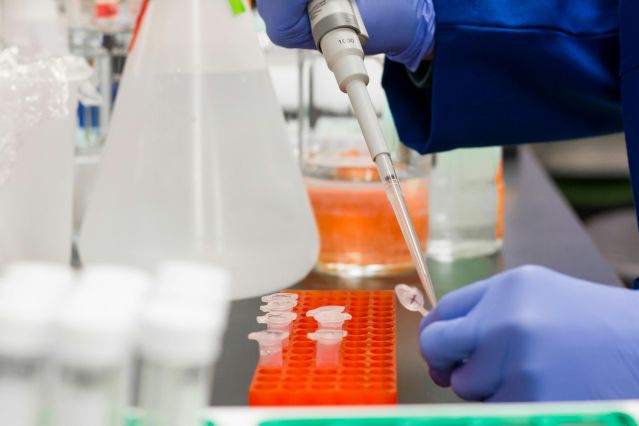By Mitchell Liester and Bertrand Liang
Water Memory
Can water remember? Some scientists believe it can. Water memory is a hypothesis that suggests water has the ability to “remember” substances once dissolved in it, even after those substances have been removed or diluted beyond the point of detection. This concept was first proposed by French immunologist Jaques Benveniste in a 1988 paper in the journal Nature. The study reported water could retain properties of dissolved biologically active molecules despite being diluted to a point that that the molecules are no longer detected.
Scientific Evidence
Benveniste’s experiments involved diluting an antibody repeatedly until no molecules of the antibody should have been present in the solution; yet the solution allegedly retained the biologic effects on immune cells. Benveniste’s findings were heavily criticized by the scientific community but were later supported by the research findings of French virologist, Luc Montagnier, a respected scientist who shared the Nobel Prize in Physiology or Medicine in 2008 for identifying the AIDS virus.
Homeopathy and Memory of Water
The idea of water memory did not begin with Benveniste or Montagnier, however. Even before their research, the idea of water memory was linked to homeopathy. Created by Samuel Hahnemann in 1796, this healing system employs remedies that are created through a process known as potentization, which involves a series of systematic dilutions and forceful shaking actions called succussions.
This process is carried out because the homeopathic law of infinitesimals suggests that dilution increases the curative power of homeopathic medications. This claim relies on water “remembering” the active substance. Although Hahnemann never suggested water could remember anything, in the 20th century homeopathy began exploring the memory of water. More recently, homeopathic research has posited that the structure of water rather than the content of water is what allows it to remember.
The idea that water could remember has been highly controversial in the scientific community. After Benveniste published his original study, it was widely criticized. A follow-up investigation led by Nature’s editor John Maddox with magician James Randi failed to reproduce Benveniste’s results. This investigation was itself criticized, since despite direct observation, the experimental conditions demanded by this effort did not actually replicate the initial experiments.
Montagnier’s research
Source: Martin Lopez/Pexels
A Nobel Award Winning Scientist’s Perspective
Subsequently, Luc Montagnier was able to replicate and to a certain extent extend Benveniste’s findings. Montagnier found substances including DNA and some viruses and bacteria, emit an electromagnetic signal (EMS), “an indelible tag,” which identifies these specific substances and pathogens, and distinguishes them from other substances including non-pathogenic organisms. This EMS can be found in solution, e.g. water.
Montagnier then carried out a clever experiment to determine if an EMS signal from DNA could be recorded and transferred to a different solution remote to the original solution. Montagnier demonstrated not only was it possible to record the EMS emitted from a DNA dissolved diluted solution, but it could also be encoded in binary code digitally, and transferred by email from France to Italy, where it was then converted back into an EMS.
This EMS was then transmitted to a solution with the building blocks of DNA, including nucleotides and a polymerase (which creates new complementary strands of DNA from a template). If the EMS signal of the original DNA was unrelated to any “memory”, the reconstructed signal would not result in new DNA similar to that of the solution in France. However, if the EMS signal was representative of the DNA from the original solution, there should be new DNA made. The results were intriguing. Using the polymerase in the EMS signal solution to amplify DNA (called PCR, polymerase chain reaction), the EMS solution reconstructed in Italy was able to result in DNA being formed – which an independent lab confirmed had 98% fidelity to the DNA of the original DNA sequence from France.
Future Implications
What implications do Montagnier’s findings have for future research? Montagnier suggested pathogens including bacteria and viruses can be identified by their EMS. Similarly, he hypothesized medicines may also emit unique EMS signals, and the EMS of medicines might be recorded and transmitted into a person’s body (e.g. by a cell phone). This would cause the medicine to reconstitute inside the body of the patient, thereby treating the pathogens of the sick individual.
Montagnier died in 2022 before he was able to further this work and confirm his hypotheses, but other scientists have picked up where his lab left off and are continuing his research. The implications could go even further – for example air is also a solution, and the brain emits EMF signals. Perhaps this could be a mechanism for Jung’s “collective unconscious” and Buddhism’s anatta, the relation of all with all. Could the detection and treatment of neuropsychiatric disease start with the detection of the brain’s EMF signals? The possibilities are striking. Perhaps one day, new, safer, and more effective diagnostic evaluations and treatments will result from these investigations.
Dr. Bertrand Liang is a neurologist and neuroscientist, who has authored of four books in the areas of clinical neurology, Buddhism, and management and leadership. Dr. Liang is a Diplomate of the American Board of Psychiatry and Neurology, a Fellow of the American Academy of Neurology, and Nominating Member of Sigma Xi, the Research Honor Society.
Source link : https://www.psychologytoday.com/za/blog/the-leading-edge/202410/can-water-remember
Author :
Publish date : 2024-10-20 21:01:59
Copyright for syndicated content belongs to the linked Source.
